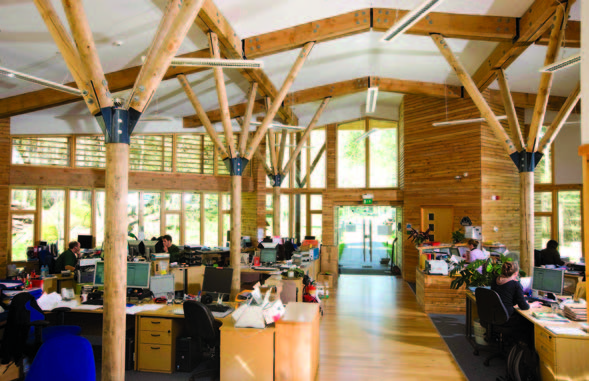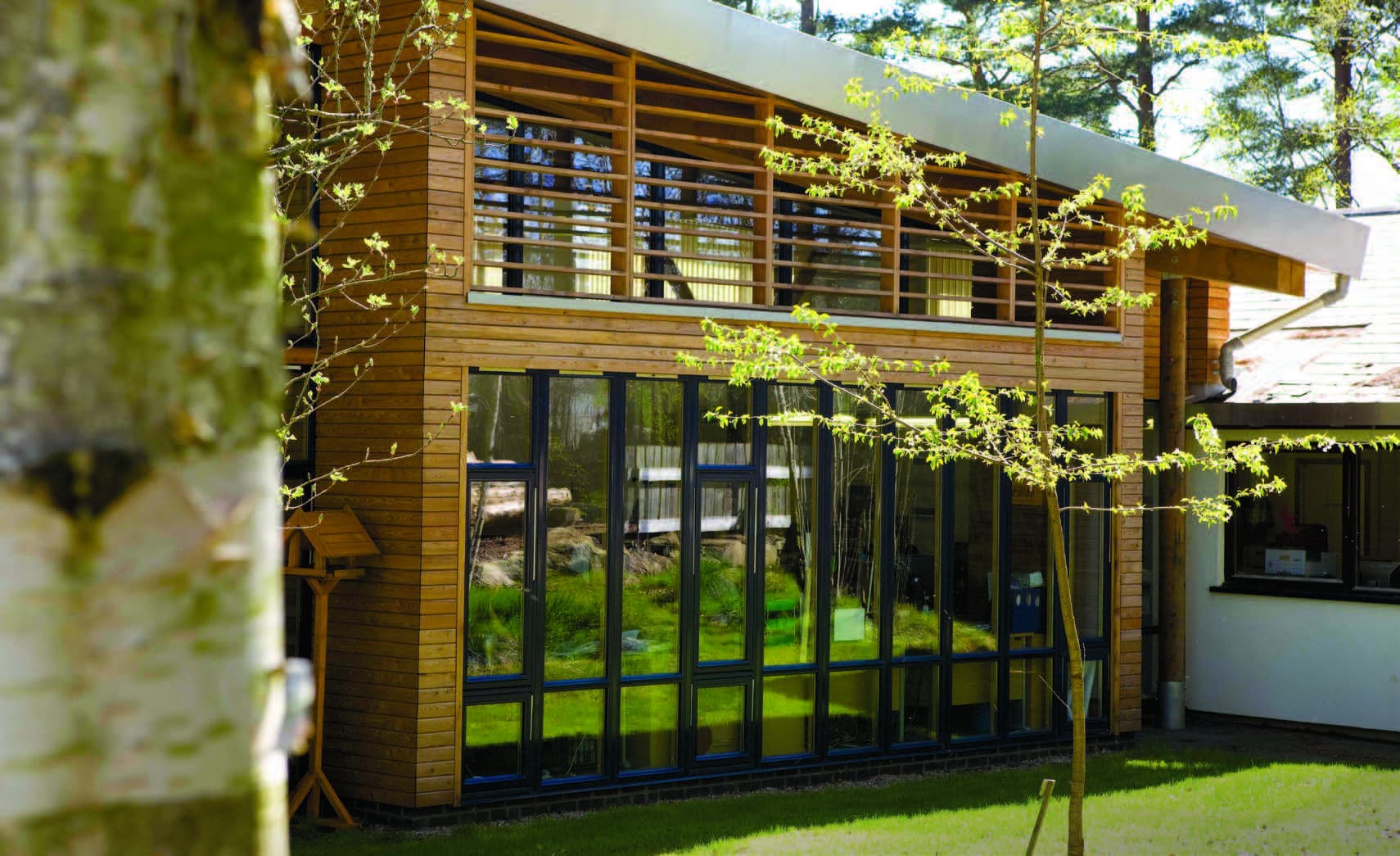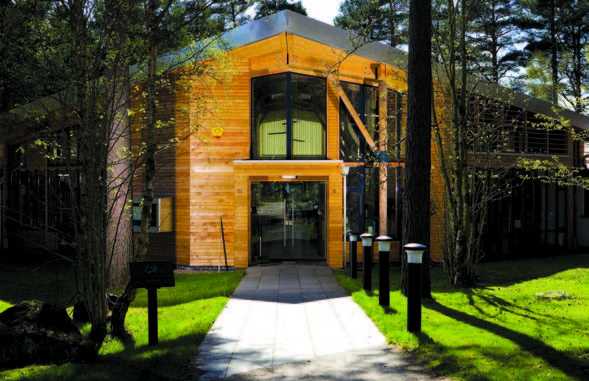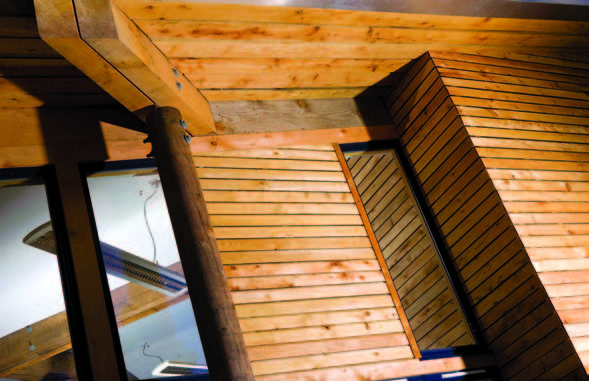This new accommodation was designed to replace an inadequate 1970s timber drying sheds, built on the site of a former sawmill which had been converted to offices. Cost restraints prevented its entire demolition. A modern and attractive extension to the existing accommodation was commissioned to meet the Scottish Government’s sustainable construction targets.
The building was designed to be an exemplar building and a modern working environment. The cost-effective use of local timber and timber products in unorthodox and innovative ways was paramount.
The building provides open plan office accommodation, meeting rooms, staff facilities, storage and parking for the diverse functions of the Forestry Commission Scotland.
Timber qualities
Although the building was located in ‘Scots pine country’, a number of practical restraints and durability issues prevented its use. These included time constraints for kiln drying, ‘blue staining’ and ‘shakes’. There was also the need to reduce long-term maintenance costs by avoiding the use of pesticides or paint stains.
Douglas fir was therefore used for the external columns and Scots pine for the internal structure.
The structure was designed as an internal forest of stylised trees with a central column and 150mm diameter poles set at a 60-degree angle to the horizontal. The poles spread like branches from the crown of the column.
The cladding is home-grown, untreated, European larch heartwood with stainless steel fixings to create a clean crisp appearance to the solid portions of the façade.
The secondary structure of wall studs and roof purlins are imported spruce flanges and oriented strand board (OSB) webs made from home-grown timber, allowing an increase in depth of insulation. The windows are imported from Norway, but given the location of the site, they have a shorter distance to travel than windows from southern England.

Special timber-related features
The Forestry Commission’s ethos is to:
- minimise the use of materials that are energy-intensive in their manufacture such as steel and concrete
- maximise the use of sustainable and environmentally friendly natural materials such as home-grown timber
Only the best quality locally sourced timber was used to provide good design and long-term durability. The versatility of timber and the limited palette of materials minimised site waste. Off-cuts were used as ‘packers’ and ‘noggings’, reducing construction costs.
By not using paints or harmful chemicals, future treatment costs and the risks of producing any hazardous waste at the end of the building’s useful life were reduced.
Sub-contractors were selected with specialist knowledge of biomass heating and underfloor heating systems, rainwater recycling and water-saving techniques.
A library of sustainable building materials
Our website includes a web-based resource that showcases sustainable, traditional, innovative, recycled and low carbon building materials. If you are looking for inspiration or information on different types of materials to consider for your project, visit our materials library.




